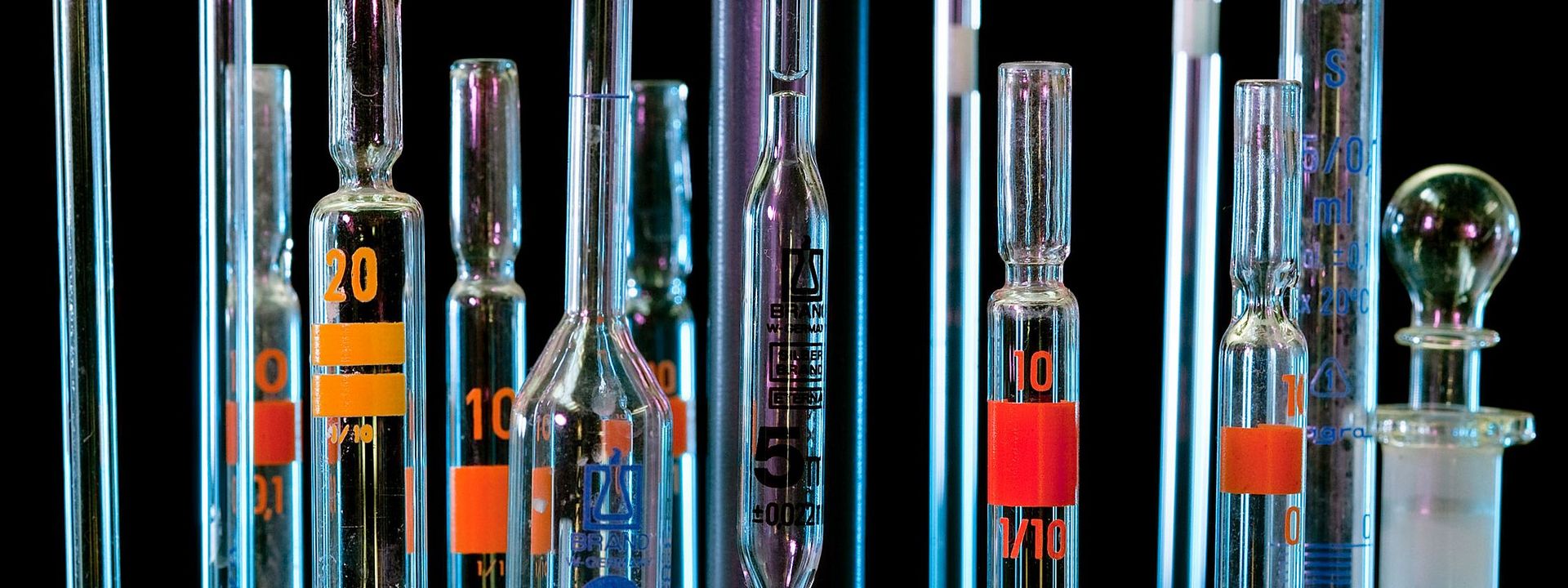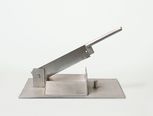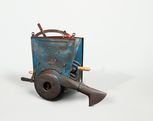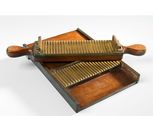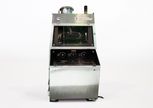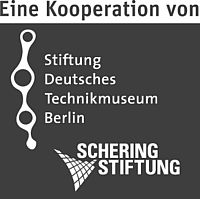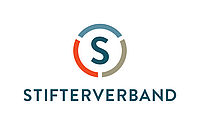Please note: From 3 April to 16 May, access to the 1st and 2nd floors of the Beamtenhaus with the exhibitions "Photo Technology", "Film Technology" and "Chemicals and Pharmacy" will be closed due to installation work.
Chemistry and Pharmaceutics:
Two Sides of the Same Coin
Four hundred square meters of exhibition space are divided into two large sections: the blue section focuses chemistry, the green on pharmaceutics. It quickly becomes clear how closely connected these two disciplines are. Pharmaceuticals, or medical drugs, aid our bodies by regulating chemical and hormonal processes. Their production follows the same laws of chemistry as that of “normal” chemicals. Ultimately, all substances are composed of molecules. And the discipline devoted to the combination and modification of molecules is chemistry.
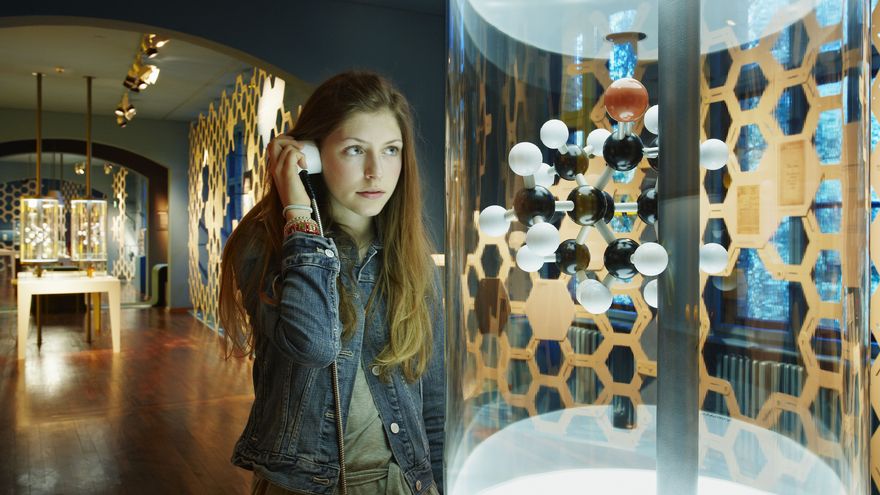
SDTB / C. Musiol
Talking Molecules and Fireworks
Visitors to the exhibition are introduced to the techniques and equipment used in a laboratory, from glass pipettes to modern pipetting robots. At audio stations, various molecules tell the fascinating story of their own discovery. And the entire exhibition is interactive. At one lab station, visitors can try their hand at pyrotechnics: choosing their own colors, designing their own fireworks, and lighting them off. Pyrochemicals exemplify the wide range of products manufactured by the chemical industry.
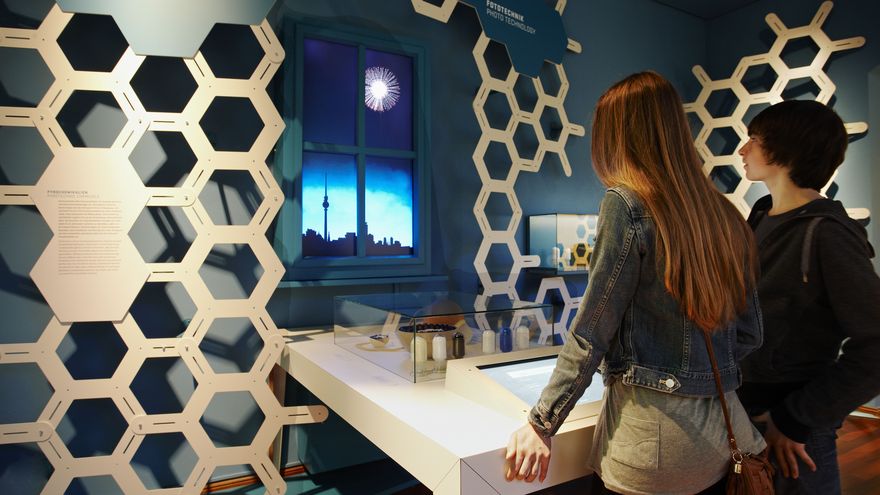
SDTB / C. Musiol
Schering: An Early Berlin Startup in the Chemical Sector
Since the 19th century, the chemical and pharmaceutical industry has shaped modern society like no other. Berlin was an important location in its development, and Schering a decisive player. The exhibition focuses on the company’s laboratory research, industrial production, and the question of the use and safety of some of its products. The transformation of the company’s facility in Berlin’s Wedding district is depicted in 3D animation.
The Discovery of Hormones and the Development of Contraception
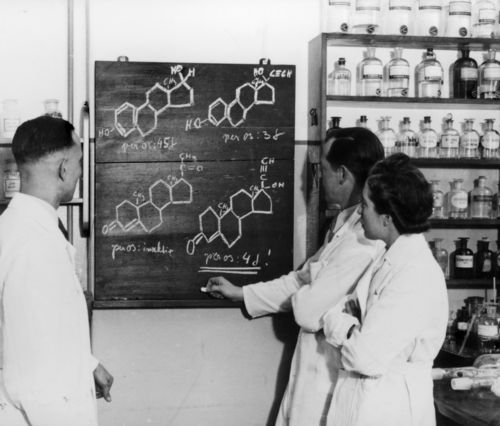
Bayer AG, Schering Archives
Schering is also a good example of the collaboration between universities and private companies for the purpose of research into sexual hormones. Indeed, this was the first-ever such collaboration, and it was very successful, resulting in the discovery of hormones in the 1920s. Another part of the exhibition focuses on Schering’s subsequent development of the birth control pill, thus illustrating the history of a pharmaceutical product. In a listening booth, visitors can hear original audio recordings from the last 50 years of people discussing “the pill.” Various methods of contraception and the social consequences for family planning and sexuality are also addressed.
Ask Your Doctor or Pharmacist about Risks and Side Effects
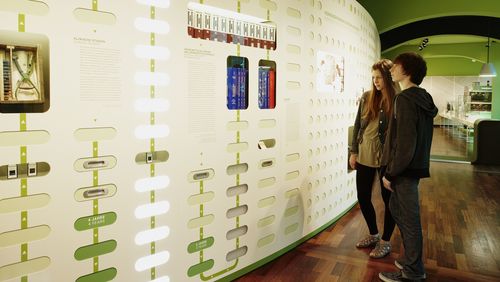
SDTB / C. Musiol
It takes many years and a great deal of money to develop the active ingredient in a pharmaceutical drug. And even then, effective drugs will always have side effects – a fact that entails legal questions about their safety. At an interactive media station at the end of the exhibition, visitors can hear various opinions on the topic – and form their own.
Glimpses into the history of the Berlin chemical company Schering.
SDTB / C. Musiol
What kind of work is done in a chemistry lab? The instruments on display illustrate various procedures such as the distillation, filtration, and extraction of chemical substances.
SDTB / C. Musiol
“Medicines for the market.” What forms of pharmaceutical drugs are there, and how are they produced?
SDTB / C. Musiol
Highlights

Bull testicle slicer
One part of the exhibition is devoted to the discovery of hormones. A rich source of male sex hormones turned out to be bull testicles. To more easily extract the desired hormones from them, they first had to be chopped up. The Schering research lab built its own tools for cutting these rather robust organs.
Schering AG, ca. 1950, on loan from Schering AG

Duster
Humans have long tried to protect crops from pests by applying poisonous salts and other substances to them, as insects and molds have perennially led to the loss of entire harvests. The duster on display here comes from the 1930s. By turning the hand crank, the powder was evenly distributed and the plants were dusted with insecticide. The person using the duster worked in a cloud of calcium arsenate, Paris green, or DDT.
ca. 1935, gift of the Kreisagrarmuseum Dorf Mecklenburg

Pill board, 1880
Down to the 17th century, pills had to be rolled individually by hand. Only when pill boards like this were introduced could production be simplified. To use it, a kneadable paste first had to be mixed. Once the right consistency was reached, the mass was rolled into a cord that had the same width as the grooved surface of the pill board. There were no precise instructions, so a pill’s properties (decay, dissolution, release) could not be predicted.
J. W. Pindar & Co., 1880, on loan from Schering AG

Korsch PH 300 – 43 tablet press
The Korsch PH 300 is a standard rotary tablet press of the kind that has been used in industrial production since the 1980s. A rotating turret turns the round die table. Powder that has been fed into a die is pressed into the form of a tablet by an upper and lower punch. The tablet then slides down onto a conveyor belt. This machine has 43 sets of punches and dies. In standard operation, it can produce 216,000 tablets per hour. It was state of the art when it was built.
Korsch AG, 1984

